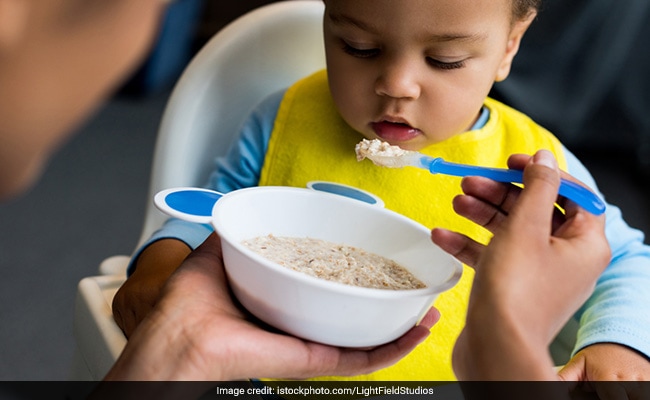
Weaning is important as some of these early tastes will stay with him/her for life. Your baby's encounter with taste starts right in the womb through the amniotic fluid and continues outside through your milk. Your baby gets somewhat exposed to different flavours of food by way of what you ate during pregnancy and breastfeeding. Most babies get their teeth between 4 to 7 months and almost around the same time, they start sitting up as well. Let the baby be around you during your meal times; when he or she sees you eat, it may get them drooling, which is a signal that it is time to introduce them to solid foods.
The saliva released by your baby contains crucial digestive enzymes required to digest solid foods. It is important that you wait for 6 months at least before you start weaning your baby. The digestive tract of the baby gradually matures and gets prepared to digest the solids. So if you introduce solids earlier than 4 months, it may lead to allergies.
Swirlster Picks Foods For You
Fruits are easiest to digest so it's a good idea to start with mashed bananas. Potassium rich bananas are closest to breast milk. Some expressed breast milk can be mixed with mashed bananas to make it a rich satisfying snack for the baby. This is the best time to find out if your baby is allergic to certain foods, so it's wise to introduce one food at a time and wait for 2 to 3 days before giving the next food.
Try all the basic fruits like papayas, chikoos, apples, pears one by one and then you can start mixing two fruits. Slowly, introduce all veggies like bottle gourd, carrots, sweet potatoes, beetroot, pumpkin, peas, one at a time, they can be steamed and mashed and offered to the baby. If the vegetable suits the baby, then two different veggies can be mixed and given.
(Also read: Diaper Care: Basic Essentials You Need For A Clean Diaper Change)
 Milk and mashed banana can be a healthy snack for the baby
Milk and mashed banana can be a healthy snack for the babySteaming will help preserve the nutrients whereas boiling the veggies in a pressure cooker destroys most of the nutrients. There are various equipments available in the market for steaming and pureeing, which you can try. Go for local, seasonal and organic fruits and vegetables. These fruits and veggies can gradually be offered as finger foods, chopped in bite-sized pieces, which also helps them develop the pincer grasp.
Pulses and whole grains like brown rice, millets, wheat can be introduced between 6 - 8 months after the introduction of fruits. They can also be introduced alongside the vegetables but is best offered after your baby is responding well to the vegetables.
Introducing a variety of foods in different textures, seasoned with fresh herbs will keep the interest of the baby alive in food and will let him explore his taste buds and develop his palette. Do we like eating the same food everyday, then why bore poor baby with the same old khichdi for all his meals?
(Also read: Skin Rashes In Babies: A Concern Or Comfort?)
 Try introducing the baby with variety of foods from time to time
Try introducing the baby with variety of foods from time to timeOnce he starts eating solids, include the baby in your mealtimes. When you eat you can make the baby sit on your lap or next to you. Allow him/her pick up the food he likes from your plate and put it in his mouth. This could get messy but acquaints your baby to the family food and will make the transition from baby food to adult food smooth for you.
Disclaimer: The Swirlster team writes about stuff we think you'll like. Swirlster has affiliate partnerships, so we get a share of the revenue from your purchase
Track Latest News Live on NDTV.com and get news updates from India and around the world
